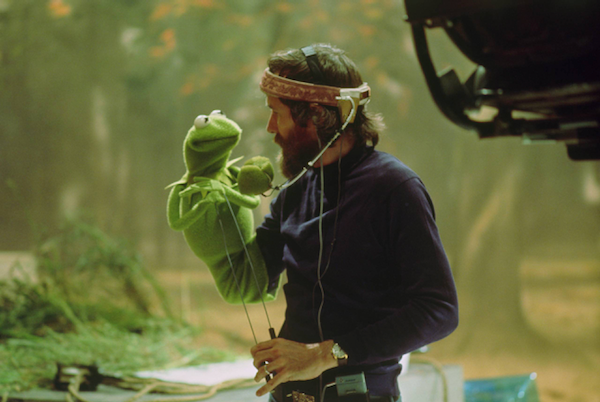Movie review by Greg Carlson
A more than serviceable portrait of the beloved artist, “Jim Henson: Idea Man” debuts on Disney+ this weekend. As organized by director Ron Howard, the documentary presents a primarily chronological overview of career highlights mixed with behind-the-scenes considerations of children and marriage. While the latter component is sanitized – predictably, given the full participation and cooperation of the Henson family – Howard circles the frustrations and challenges experienced by Jane Nebel with care and sensitivity. Naturally, the most devoted fans will come in with higher expectations than the casual viewer. All, however, will thrill to Howard’s skillful assemblage of colorful and wondrous archival footage, some of it never previously shared.
In the spirit of Henson’s boundless energy and devotion to the experimental, Howard incorporates transitional and interstitial animations that evoke the vibe of shorts like the Oscar-nominated “Time Piece,” itself briefly excerpted and addressed. Newly collected on-camera interviews with Henson’s surviving children – son John died in 2014 – and a select group of key collaborators split some of the remaining space with all kinds of clips and television appearances that allow Henson to speak for himself. A certain highlight/ringer among these vintage treats is the appearance of Henson and Frank Oz on the unsold pilot of “The Orson Welles Show,” which should be the subject of its very own documentary.
It’s no shock that Frank Oz is the best of the talking heads, which include Rita Moreno as the de facto representative of “The Muppet Show” celebrity guest stars and Jennifer Connelly speaking to Henson’s fantasy film era output. While Oz has previously spoken on the singular relationship he enjoyed with Henson, “Idea Man” reminds us that together, Henson and Oz formed one of the most sublime and glorious comedy duos in the history of the business. It is, needless to say, impossible to imagine a comprehensive assessment of Henson’s life without the participation of Oz. All of Oz’s anecdotes contribute to a richer understanding of the man he deferentially describes as his boss. A few bring tears to the eyes.
Howard makes some hard cuts to maintain the right balance of major milestones, leaps of faith, and creative and commercial risks/pay-offs. Following the origin story that sees the evolution of Kermit the Frog following his earliest incarnation on WRC-TV’s “Sam and Friends” in Washington D.C., the movie covers Henson’s contributions to “Sesame Street” with a sharp sense of context. Marilyn Agrelo’s 2021 documentary “Street Gang: How We Got to Sesame Street,” based on the terrific book by Michael Davis, makes a fine companion for those who want more.
Interestingly, Henson’s massive capacity for busting personal boundaries and his desire to reinvent through the embrace of new technologies are arguably made most visible by Howard in the sections after the conclusion of “The Muppet Show” in 1981. Neither “The Dark Crystal” nor “Labyrinth” catapulted Henson into the same ether occupied by the most universally popular Muppets, but we are reminded of the key ways in which those movies influenced future artists. By the time Howard approaches the dreaded hour of Henson’s untimely death in 1990 at the age of 53, we are positively winded from the film’s dizzying sprint through a truly amazing body of work.
